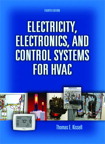At issue are several core components of a total system of building safety that have come to light following two deadly nightclub incidents. The first was in Chicago, in which 21 patrons were killed in a crowd crush on February 17. The second incident occurred on February 20 when a fast-spreading fire in a West Warwick, RI nightclub killed 97 occupants.
"We must not waste any time in examining all the available information about public assembly occupancies in the wake of these building emergencies," said NFPA executive vice president Arthur E. Cote, P.E. "Although we still don't have all the facts about these terrible incidents, we know enough right now to warrant a serious review and scrutiny of the future direction of codes and standards, and their enforcement locally. We must learn from these tragedies, and the time to act is now."
NFPA is calling for a review of the following issues addressed or affected by NFPA codes:
NFPA facilitates the development of more than 300 building, fire, electrical, and life safety codes and standards under a consensus code-making process that is accredited by the American National Standards Institute (ANSI). More than 6,500 volunteers serve on NFPA technical committees, writing NFPA model codes, standards, and recommended practices. NFPA is a private, nonprofit membership organization, and is not an enforcement authority. NFPA codes and standards are developed as minimum requirements and are voluntary, unless they are adopted by a jurisdiction and then enforced locally.
Regularly revised and updated, NFPA model codes and standards have rapidly incorporated the lessons learned following significant fire losses throughout the Twentieth Century. While voluntary, they have served on many occasions to stimulate needed reforms nationwide.
Among NFPA's codes are NFPA 1, Uniform Fire Code(tm), which prescribes the minimum requirements necessary to establish a reasonable level of safety in buildings, including providing for inspections and interior finish and other combustibles; NFPA 101, Life Safety Code®, which sets minimum building design, construction, operation, and maintenance requirements necessary to protect building occupants from dangers caused by fire and other emergencies, and also provides prompt escape requirements for new and existing buildings; and NFPA 5000(tm), Building Construction and Safety Code(tm), the first consensus-based building code, which contains provisions for every aspect of the design and construction of buildings and structures, as well as the design of integrated building systems for health, safety, comfort, and convenience. Public assembly occupancies, including nightclubs, are addressed in all three of these NFPA codes.




